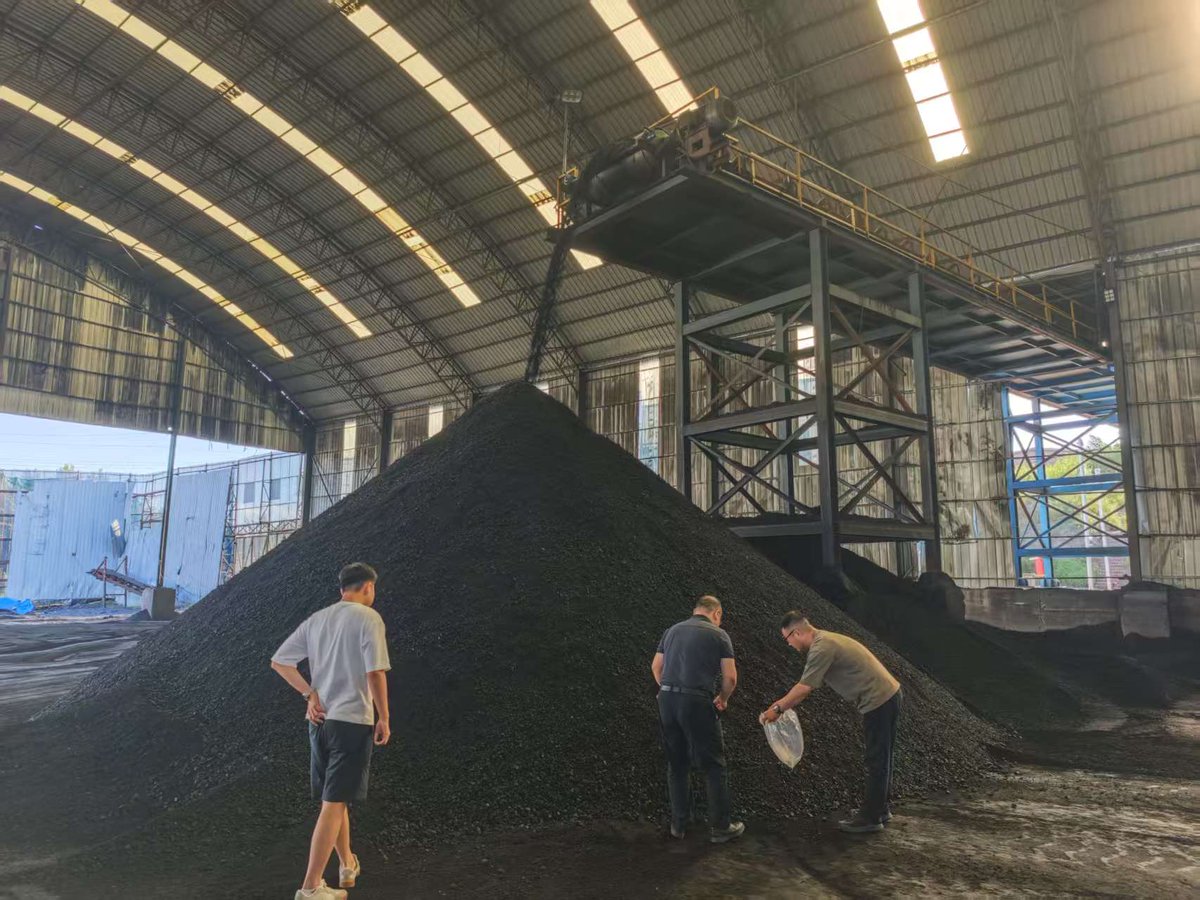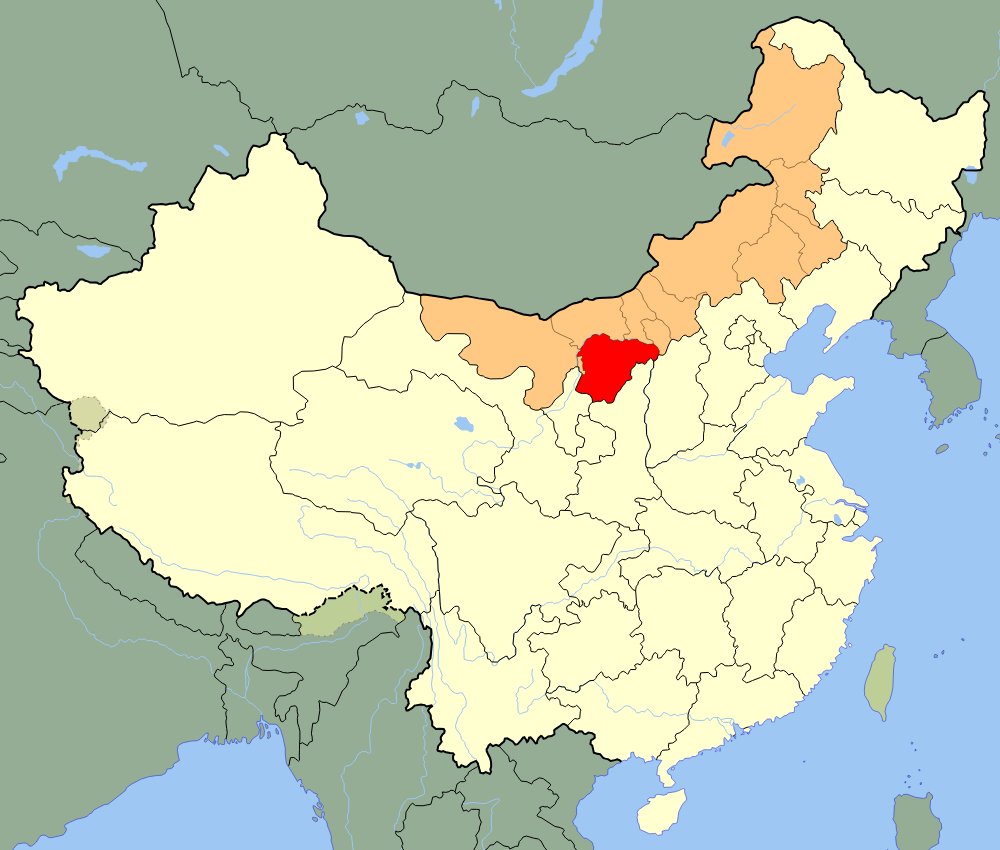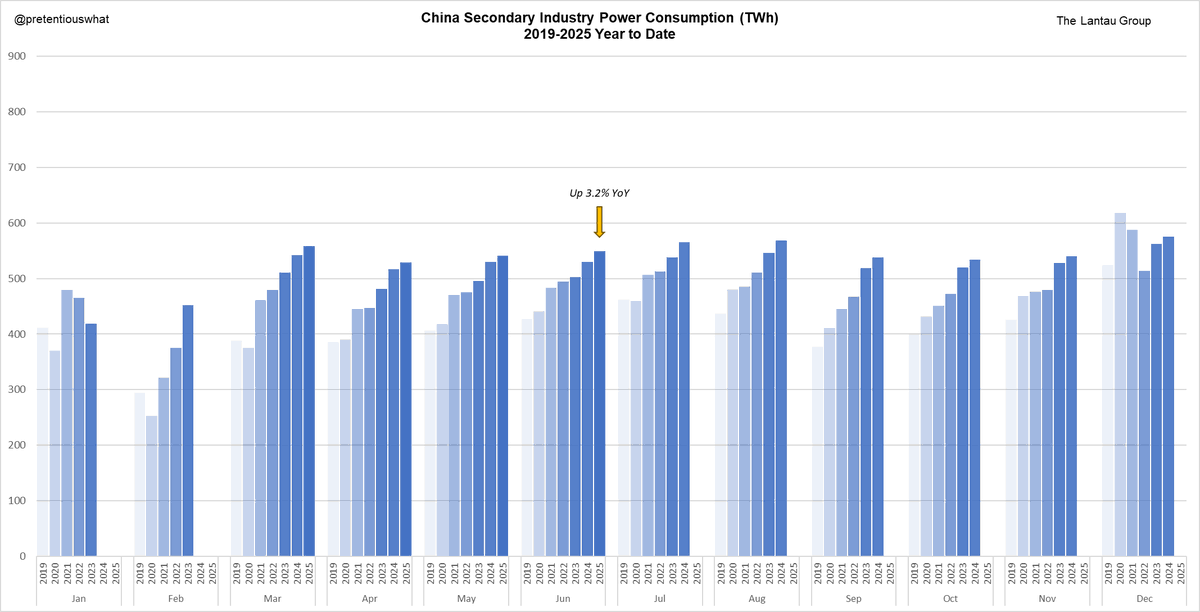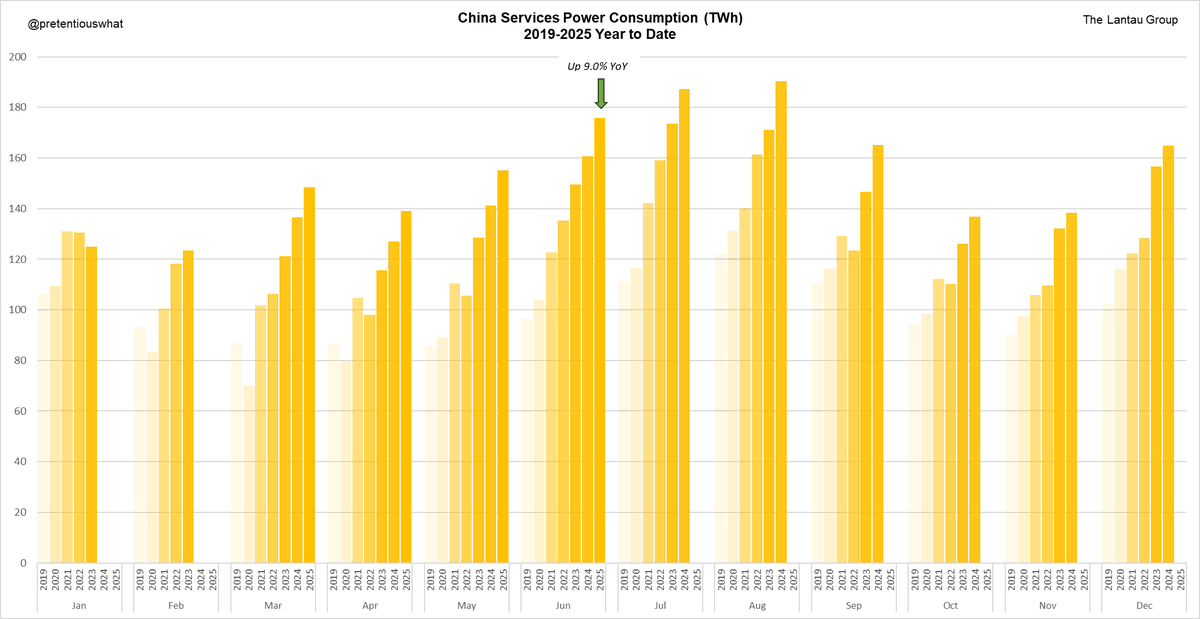Okay. Here we have a boldly stated series of ideas about Chinese solar. They are unsupported and wrong.
But it's a good opportunity to talk through some issues re: how we integrate solar, and some of the important and hotly-debated considerations. So I'll try to make this educational, not merely critical.
Let's dig in...
1.
"local solar prodution numbers are based on models, not measurements"
No. Models are typically forward-looking, used for forecasting, not describing the past. No matter whether the solar generator is offtaking to a power user, a power retailer, or the gridco itself, there's a business transaction going on there. The generator is being compensated based on how much electricity they generate, so you need measurement (i.e. metering). Without metering each kWh of power, how could you run a power business? 🤨
In China, the grid companies (e.g. State Grid and Southern Grid) and their subsidiaries have a monopoly over installation, maintenance, and reading of metering infrastructure. They report monthly, quarterly, and annual data to the NEA/NBS (or to the China Electricity Council, which compiles data on behalf of the NEA and NBS). That's the source of the generation stats. You could find always find a way to criticize the measuring and reporting methodology I suppose, but it's definitely a measurement approach, not a modeling approach.
But it's a good opportunity to talk through some issues re: how we integrate solar, and some of the important and hotly-debated considerations. So I'll try to make this educational, not merely critical.
Let's dig in...
1.
"local solar prodution numbers are based on models, not measurements"
No. Models are typically forward-looking, used for forecasting, not describing the past. No matter whether the solar generator is offtaking to a power user, a power retailer, or the gridco itself, there's a business transaction going on there. The generator is being compensated based on how much electricity they generate, so you need measurement (i.e. metering). Without metering each kWh of power, how could you run a power business? 🤨
In China, the grid companies (e.g. State Grid and Southern Grid) and their subsidiaries have a monopoly over installation, maintenance, and reading of metering infrastructure. They report monthly, quarterly, and annual data to the NEA/NBS (or to the China Electricity Council, which compiles data on behalf of the NEA and NBS). That's the source of the generation stats. You could find always find a way to criticize the measuring and reporting methodology I suppose, but it's definitely a measurement approach, not a modeling approach.
2.
"Industrial solar production numbers aren’t backed by enough batteries to match consumption curves..."
The claim I think being made here is China's daily power consumption demand curves are not matched to the generation profile of solar, thus solar production would need to be time-shifted to a different time of the day with batteries for those production numbers to be realistic. But since China doesn't have "enough batteries" to do this, then the solar production data must be fraudulent.
This is speculative nonsense. I know OP pulled this argument out of thin air, because it's a fairly complex argument that would necessitate validation via datasets, models, or market access he doesn't have. Are China's 95 GW/222GWh of batteries installed nationwide "enough"? How would anyone besides a Chinese power trader, regulator, or market dispatch modeler know? You need to have a robust, data-backed argument here, because you're seeking to overturn/debunk reported data from State Grid.
But even without a quant-based argument, it's just a weird argument for solar.
Solar produces power during the day, aligning with human activity, as we are generally diurnal creatures. So solar already produces when humans tend to consume power. At low penetration levels for solar (say, <10%) you hardly even need batteries to time-shift solar to another part of the day because solar's production can be fully absorbed by the typical daytime rise in power usage.
At higher penetration rates for solar, you actually will get to the point where production can't be absorbed by the daytime consumption spike and thus storage becomes not just "nice-to-have" but necessary to avoid wastage - unless you have very flexible generators that can easily ramp up and down (more on this later). This issue can arrive earlier for wind than for solar, because wind tends to produce more when humans are asleep and power loads are lower, but we're talking about solar here.
There are a few provinces where daytime overproduction of solar is a real problem, like Shandong...and they are indeed installing storage rapidly, as you would expect from what I have just described. But Shandong is a frontrunner. Nationwide, solar provided just 8% of China's generation mix last year, so its ability to be disuptive is muted, paradoxically both massive, but also mostly absorbed with only a few ripples by the overall vastness of the Chinese power sector.
"Industrial solar production numbers aren’t backed by enough batteries to match consumption curves..."
The claim I think being made here is China's daily power consumption demand curves are not matched to the generation profile of solar, thus solar production would need to be time-shifted to a different time of the day with batteries for those production numbers to be realistic. But since China doesn't have "enough batteries" to do this, then the solar production data must be fraudulent.
This is speculative nonsense. I know OP pulled this argument out of thin air, because it's a fairly complex argument that would necessitate validation via datasets, models, or market access he doesn't have. Are China's 95 GW/222GWh of batteries installed nationwide "enough"? How would anyone besides a Chinese power trader, regulator, or market dispatch modeler know? You need to have a robust, data-backed argument here, because you're seeking to overturn/debunk reported data from State Grid.
But even without a quant-based argument, it's just a weird argument for solar.
Solar produces power during the day, aligning with human activity, as we are generally diurnal creatures. So solar already produces when humans tend to consume power. At low penetration levels for solar (say, <10%) you hardly even need batteries to time-shift solar to another part of the day because solar's production can be fully absorbed by the typical daytime rise in power usage.
At higher penetration rates for solar, you actually will get to the point where production can't be absorbed by the daytime consumption spike and thus storage becomes not just "nice-to-have" but necessary to avoid wastage - unless you have very flexible generators that can easily ramp up and down (more on this later). This issue can arrive earlier for wind than for solar, because wind tends to produce more when humans are asleep and power loads are lower, but we're talking about solar here.
There are a few provinces where daytime overproduction of solar is a real problem, like Shandong...and they are indeed installing storage rapidly, as you would expect from what I have just described. But Shandong is a frontrunner. Nationwide, solar provided just 8% of China's generation mix last year, so its ability to be disuptive is muted, paradoxically both massive, but also mostly absorbed with only a few ripples by the overall vastness of the Chinese power sector.
3.
"...but solar producers don’t pay for increased costs and waste induced in competing sources."
In China, this is broadly true, but not true everywhere, as it depends entirely on local market design. China's design has evolved over time but remains reasonable for China.
Non-flexible power sources are typically forced to try to "get out of the way" in spot markets when variable generators are producing, to their disadvantage. They incur losses caused by the existence of the variable generator. Coal generators in particular suffer from very low annual operating hours in China, although this was historically mostly because the coal generation sector is overbuilt and cannibalizes itself, with the "shouldering-out" effect from renewables starting to play a material role only since ~2021.
Generally speaking, generators being pushed out by renewables will usually have the opportunity to make up the losses on power sales by serving as load-following generators or suppliers of capacity, earning revenues in the ancillary services market or capacity market, respectively. Gas-fired power plants and battery farms are very well suited to play this role. Coal-fired power and nuclear can do it as well, although they are less well-suited and may need retrofits to perform in this way. This is how we keep these generators whole and happy and prevent them from exiting the market - assuming we felt we needed them to stick around.
Of course, these ancillary services fees or capacity fees have to come from somewhere, which brings us back to the original issue - whether solar producers are paying for it or not. Broadly, there are two competing philosophies here: "causer pays" and "beneficiary pays". Sometimes it makes sense to force the renewables generators to pay, as their existence necessitated the load-following service ("causer pays"), and sometimes it makes more sense to socialize those costs to everyone who benefitted from the service provided ("beneficiary pays").
The question of how to allocate these costs is a major point of contention in power market and power system design all around the world right now, and there is no "right answer"; it really depends on your country's economic and energy priorities and the ability of each of the stakeholders to pay. Someone who tries to force a one-size-fits-all to this question is not going to make a very good analyst or advisor!
China deals with these costs in a China-specific way that makes sense for its needs in this moment: Capacity charges for backup coal, batteries, gas, are mostly socialized to end-users (i.e., beneficiary pays). Ancillary services are broadly socialized too. Wind and solar generators are mostly exempt and hardly held financially responsible for any of the losses they cause for other generators in the market. They command a low-carbon privilege and the "victims" are primarily coal-fired generators, as China is trying to peak emissions, so this shouldn't be surprising.
Passing charges to end users is a more socially acceptable approach when you've already been highly effective in keeping power rates low. It also helps to have a huge base of power customers to share the burden. Another benefit of China's scale.
Nuclear generators are basically shielded from this mess, since they sell almost all their power via annual contracts to either the grid or large end-users, guaranteeing their dispatch and sidestepping the gladiator arena of the short-term markets. Even if they have to compete in spot markets someday though, they'll likely be fine, since they should be able to handily out-compete coal-fired generators and consistently earn dispatch. Chinese nuclear is cheap.
"...but solar producers don’t pay for increased costs and waste induced in competing sources."
In China, this is broadly true, but not true everywhere, as it depends entirely on local market design. China's design has evolved over time but remains reasonable for China.
Non-flexible power sources are typically forced to try to "get out of the way" in spot markets when variable generators are producing, to their disadvantage. They incur losses caused by the existence of the variable generator. Coal generators in particular suffer from very low annual operating hours in China, although this was historically mostly because the coal generation sector is overbuilt and cannibalizes itself, with the "shouldering-out" effect from renewables starting to play a material role only since ~2021.
Generally speaking, generators being pushed out by renewables will usually have the opportunity to make up the losses on power sales by serving as load-following generators or suppliers of capacity, earning revenues in the ancillary services market or capacity market, respectively. Gas-fired power plants and battery farms are very well suited to play this role. Coal-fired power and nuclear can do it as well, although they are less well-suited and may need retrofits to perform in this way. This is how we keep these generators whole and happy and prevent them from exiting the market - assuming we felt we needed them to stick around.
Of course, these ancillary services fees or capacity fees have to come from somewhere, which brings us back to the original issue - whether solar producers are paying for it or not. Broadly, there are two competing philosophies here: "causer pays" and "beneficiary pays". Sometimes it makes sense to force the renewables generators to pay, as their existence necessitated the load-following service ("causer pays"), and sometimes it makes more sense to socialize those costs to everyone who benefitted from the service provided ("beneficiary pays").
The question of how to allocate these costs is a major point of contention in power market and power system design all around the world right now, and there is no "right answer"; it really depends on your country's economic and energy priorities and the ability of each of the stakeholders to pay. Someone who tries to force a one-size-fits-all to this question is not going to make a very good analyst or advisor!
China deals with these costs in a China-specific way that makes sense for its needs in this moment: Capacity charges for backup coal, batteries, gas, are mostly socialized to end-users (i.e., beneficiary pays). Ancillary services are broadly socialized too. Wind and solar generators are mostly exempt and hardly held financially responsible for any of the losses they cause for other generators in the market. They command a low-carbon privilege and the "victims" are primarily coal-fired generators, as China is trying to peak emissions, so this shouldn't be surprising.
Passing charges to end users is a more socially acceptable approach when you've already been highly effective in keeping power rates low. It also helps to have a huge base of power customers to share the burden. Another benefit of China's scale.
Nuclear generators are basically shielded from this mess, since they sell almost all their power via annual contracts to either the grid or large end-users, guaranteeing their dispatch and sidestepping the gladiator arena of the short-term markets. Even if they have to compete in spot markets someday though, they'll likely be fine, since they should be able to handily out-compete coal-fired generators and consistently earn dispatch. Chinese nuclear is cheap.
4.
"China solar imply numbers they would have to turn off and on every coal power plant every day. This is impossible."
No. Right now they just ramp some of them up and down slightly, which makes room for the daytime production boom, which coincides with the daytime consumption spike. Not "turn off and on" every day. 8% solar in the generation mix is meaningful, but not that disruptive...yet.
It's a common misconception these days that Chinese coal plants are already commonly operating very flexibly. Some of them are, and more and more will, and more and more of them can, but mostly this is a future concern, not a today concern. The biggest driver of low coal plant capacity factors in 2025 is still coal plant oversupply.
Longer-term, more variable generation gets built, and then they WILL need to ramp them up and down more aggressively, which is why they're now building and retrofitting coal plants to do that explicitly. We know this because the government has a program mandating "flexibility" retrofits...and it has also mandated all newly-constructed capacity to be highly flexible, down to as low as 30% output and back up to 80%, all within a few hours. Put simply, they intend to run their coal plants like gas plants. Typical? No. Doable? We'll see.
- End
"China solar imply numbers they would have to turn off and on every coal power plant every day. This is impossible."
No. Right now they just ramp some of them up and down slightly, which makes room for the daytime production boom, which coincides with the daytime consumption spike. Not "turn off and on" every day. 8% solar in the generation mix is meaningful, but not that disruptive...yet.
It's a common misconception these days that Chinese coal plants are already commonly operating very flexibly. Some of them are, and more and more will, and more and more of them can, but mostly this is a future concern, not a today concern. The biggest driver of low coal plant capacity factors in 2025 is still coal plant oversupply.
Longer-term, more variable generation gets built, and then they WILL need to ramp them up and down more aggressively, which is why they're now building and retrofitting coal plants to do that explicitly. We know this because the government has a program mandating "flexibility" retrofits...and it has also mandated all newly-constructed capacity to be highly flexible, down to as low as 30% output and back up to 80%, all within a few hours. Put simply, they intend to run their coal plants like gas plants. Typical? No. Doable? We'll see.
- End
Addendum: Some provincial-level analysis.
Here's the current state of solar capacity installs by province as of 1H 2025. I'm looking on the right side - cumulative installations.
My goal here is to highlight how individual provinces are equipped differently to integrate their installed solar capacity, which ones are currently easily manging it, which ones are struggling, and how it is likely to drive their choices re: power market reform and design.
Most C&I rooftop solar is consumed by the rooftop owners directly, so if we're considering the capacity for solar to disrupt power markets and cause headaches, we'll focus in on the utility-scale and the residential rooftop solar, i.e. the portions that mostly feed into the local grid (and thus impact local markets).
Some of these provinces are seeing huge numbers for solar on an installed capacity basis. You see Shandong at the top, with a huge ~60 GW of solar that mostly feeds into the grid. It's no wonder that Shandong often sees negative power prices in its spot market - that's about 30% of its installed capacity base today!
Negative power prices for short periods of time are a useful market signal. Negative prices for long periods of time constitute a market failure IMO. Any non-flexible generator with spot market exposure in Shandong is getting beat up, flexibility/ramping demands are very high, and solar is throwing its weight around, causing general market mayhem. This has been going on for ~2 years now, although a huge push for storage has been underway.
Shandong is the canary in a coal mine. It's no wonder the next-largest provinces (Jiangsu and Hebei) have been very cautious about formally launching their spot markets. They're probably concerned about replicating the Shandong experience and want to ensure their market design is better-equipped to deal with this much solar.
Xinjiang is next, but most of that solar is exported to other provinces, and colocated with load-following coal to smooth out the generation. So it has fewer worries about such things.
After that come Zhejiang and Guangdong which actually have relatively small utility-scale and residential RTS (most of their solar is C&I rooftop) so solar's ability to be disruptive is more muted.
After that we have Anhui and Henan, which will have similar concerns to Jiangsu and Hebei, and Yunnan and Inner Mongolia, which are more similar to Xinjiang. However, West Inner Mongolia just started spot market operations recently and, so far is not showing trading results as extreme as Shandong's, so hopefully that means the right lessons have been learned. 🙃
Here's the current state of solar capacity installs by province as of 1H 2025. I'm looking on the right side - cumulative installations.
My goal here is to highlight how individual provinces are equipped differently to integrate their installed solar capacity, which ones are currently easily manging it, which ones are struggling, and how it is likely to drive their choices re: power market reform and design.
Most C&I rooftop solar is consumed by the rooftop owners directly, so if we're considering the capacity for solar to disrupt power markets and cause headaches, we'll focus in on the utility-scale and the residential rooftop solar, i.e. the portions that mostly feed into the local grid (and thus impact local markets).
Some of these provinces are seeing huge numbers for solar on an installed capacity basis. You see Shandong at the top, with a huge ~60 GW of solar that mostly feeds into the grid. It's no wonder that Shandong often sees negative power prices in its spot market - that's about 30% of its installed capacity base today!
Negative power prices for short periods of time are a useful market signal. Negative prices for long periods of time constitute a market failure IMO. Any non-flexible generator with spot market exposure in Shandong is getting beat up, flexibility/ramping demands are very high, and solar is throwing its weight around, causing general market mayhem. This has been going on for ~2 years now, although a huge push for storage has been underway.
Shandong is the canary in a coal mine. It's no wonder the next-largest provinces (Jiangsu and Hebei) have been very cautious about formally launching their spot markets. They're probably concerned about replicating the Shandong experience and want to ensure their market design is better-equipped to deal with this much solar.
Xinjiang is next, but most of that solar is exported to other provinces, and colocated with load-following coal to smooth out the generation. So it has fewer worries about such things.
After that come Zhejiang and Guangdong which actually have relatively small utility-scale and residential RTS (most of their solar is C&I rooftop) so solar's ability to be disruptive is more muted.
After that we have Anhui and Henan, which will have similar concerns to Jiangsu and Hebei, and Yunnan and Inner Mongolia, which are more similar to Xinjiang. However, West Inner Mongolia just started spot market operations recently and, so far is not showing trading results as extreme as Shandong's, so hopefully that means the right lessons have been learned. 🙃

• • •
Missing some Tweet in this thread? You can try to
force a refresh


















